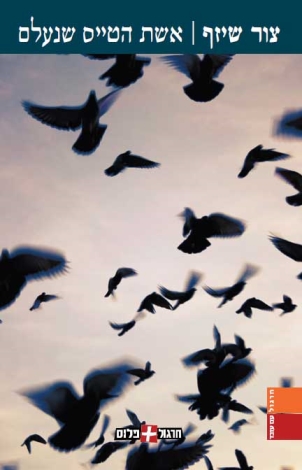
The Lost Pilot’s Wife
Assaf, an Israeli Air Force pilot whose plane is shot down over Lebanon, bails out behind enemy lines. It happens in the mid-1980s, and a bloody civil war between various militias is raging in Lebanon. The wounded Assaf expects that he’ll be rescued by the Israeli army, but he is captured by one of the Shi’ite organizations. In Israel, his wife Ruth, in late stages of pregnancy with their son, tries in vain to find out what has happened to her beloved husband.
The novel is told in two voices, that of the pilot who has vanished in Lebanon, and that of the woman who has been left without him. Who is right: those who surmise that he is dead, or those who are convinced that he is still alive? Will the pilot’s wife get the answer to the question that is tormenting her? And how does one break free in a complicated place like the Middle East, where a person can be a total stranger, a persecuted refugee, or an exile seeking asylum only a few kilometers from the place where he was born?
Assaf makes several attempts to escape but he is caught and ends up in the hands of Hizballah. He is transferred to Damascus, returned to Lebanon, undergoes physical and mental torture, and is moved around from one village to another. Finally, he is taken in to the home of Abu Shams, a Lebanese village doctor, who gives him a new life and a new identity. Assaf learns Arabic, starts a new family and becomes Yusuf, a doctor specializing in herbal remedies. He wanders from village to village in the enchanted country landscapes, healing the ill and gaining admiration. He achieves his freedom and attains peace, but needs to tell his story to Ruth, whose soul is still tied to his soul.
The Lost Pilot’s Wife tells a suspenseful story that exceeds the limits of imagination, an exciting drama of survival, against the backdrop of a conflicted political and military situation.

-
“Tsur Shezaf has chosen to tell a big, dramatic, familiar story, and he does so in a decidedly respectable way … The Lost Pilot’s Wife can be viewed, first of all, as the story of an area with an enchanting, unique landscape—war-torn Lebanon—which Shezaf describes so wonderfully … There is something in Shezaf’s descriptions of the landscape, and in his phenomenal grasp of local geography and botany, which serves as an incredible, even magical ground for a major story, politically and militarily speaking. On this ground, Shezaf creates a nerve-wracking story … Shezaf navigates the plot with an impressively masterful hand, and takes it to places with the potential for melodrama, without allowing the melodramatic concoction to boil over. The final scene is an impressive literary episode of restraint and precision … Shezaf positions his story within a bubbling stream of political lava, but what stands out is that he does not take a judgmental stance: there are no good guys and bad guys in this story, just as there probably aren’t in reality … Assaf Vardi’s story, and mainly his decisions, make him a special and unconventional character …a character with impressive depths, who enters deep into our hearts.”
-
“Shezaf charges the space in which the characters roam with lyricism, symbolism and mystical meanings … The geographical expanse becomes fertile ground for illustrating the soul’s depths. Every plant, every plot of land, and every landscape are depicted with great esteem for their medical or purposeful significance for the characters, the emotions and memories they evoke, and their concrete and dramatic effect on the situation. The plot of The Lost Pilot’s Wife moves between these different layers, and Shezaf skips among them with ease and sensitivity … The Lebanese expanses allow the author to expand the borders of literary expression, with impassioned descriptions of flora and landscapes, which he connects impressively with Assaf’s psychological processes. ”
-
“This is a book that gives something. It is in the present, it is interesting. It tells an excellent story … It can be said that this book depicts a situation that touches all of us … The book served me as a riveting, pleasant guide, replete with information. I followed the paths that it showed me willingly, painfully, in wonderment and in astonishment. ”
